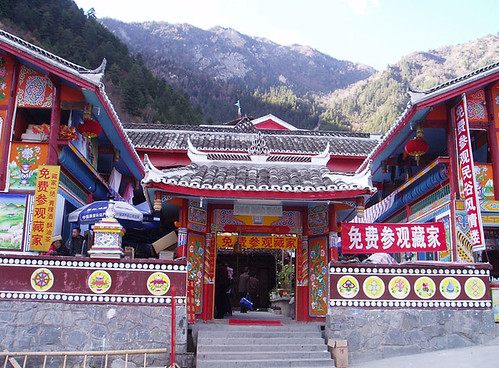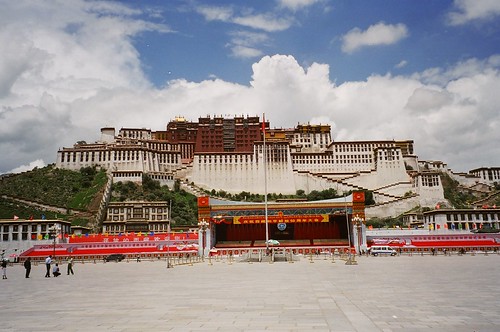Tibet was an independent country (with some exceptions such as the Mongol invasions in the seventeenth century and the British occupation in 1904) until 1949. Despite these attacks, Tibet has maintained its cultural identity, even now, and since 1950, when China decided to seize their independence and protect them under the umbrella of «Greater China».

Photography by @ alex
This invasion affected approximately one million Tibetans and the Dalai Lama himself, who went into exile in India. The exodus began, and more than 100,000 Tibetans fled their country. As overwhelming data, we can highlight the presence of temples and monasteries, which rose from 2,700 in 1960 to just 8 in 1978.
The situation has not improved, and the relationship between Chinese and Tibetans remains tense. And we have recalled this year for the celebration of the Olympic Games in Beijing.
Tibet is one of the poorest areas of China and the majority of Tibetans live in rural areas because cities have been colonized by Chinese immigrants seeking new business opportunities in these lands. Despite the precariousness of their lives most of the Tibetan population, this country offers an experience for travelers, who get the mysticism and Tibetan lifestyle, steeped in vast landscapes.

Photography by poeychin
Often called the «Roof of the World» by their situation. At its summit, climate and access roads are hard, probably why they have managed to retain the essence of their culture, deeply intertwined with Buddhist principles.
Although the «Greater Tibet» includes many Chinese provinces and to come here do not need a special permit, which recognizes China as Tibet is only the Tibet Autonomous Region. To access your capital, Lhasa, is also needed Chinese visa, a special permit due to the criticism that is being evaluated for its deletion. The oddest thing about this permit is that it handled some hotels, lodges and travel agencies, which included in the ticket price, so that instead of costing about $ 6 (official price), passes about 60 USD in management expenses.
Most travelers coming to Lhasa from Beijing and the capitals of the provinces of Sichuan, Qinghai and Yunnan, but with the launch of the train to Lhasa, has improved access to Tibet from other places like Shanghai or Xian.
There are people who claim to have traveled to Tibet without permission, and may be true, but it’s a risk you run. If you stop at a checkpoint, most likely you are traveling by air, they can refuse entry and make you return to your starting point.
One of the main concerns of travelers to Tibet or Nepal is altitude sickness. The truth is that it affects each person differently. The most common symptoms are headache, nausea or dizziness. To prevent or relieve these symptoms is advised to be physically fit and enough sleep, that sleep disturbance does not aggravate the high altitude sickness. And above all, take your journey with confidence, surely you feeling tired, so enjoy the scenery, the city and its people during the first days, but without great effort.

Photography by joaquinuy
Do not miss:
– The market and Barkor Zone: It is essential.
– The stunning mountain scenery. Nan-Tzu lakes and lagoYam-Droke are spectacular. Even if you’ve been in other areas of high mountains, Himalayan landscapes are truly unique.
– The fields of red poppies that are lost in the skyline.
– Cultural norms, the Tibetans have maintained throughout the centuries.
– You will find that many places are flooded with prayer flags, those that aim to take them the wind to follow their wishes.
Good trip to Tibet!
Leave a Reply
You must be logged in to post a comment.
Recent Comments